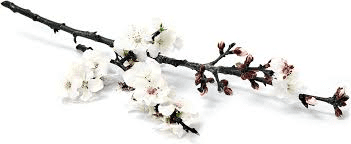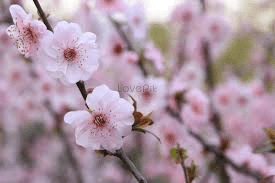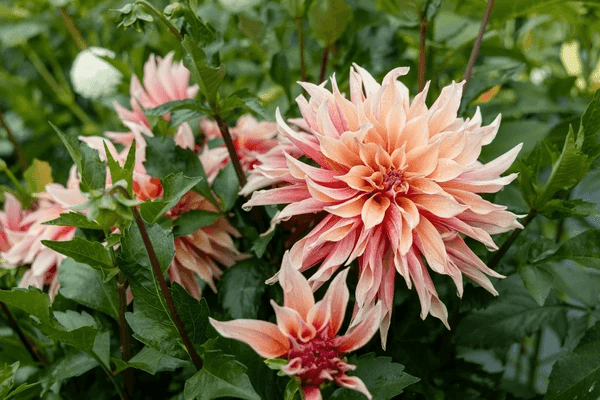Apricot petals are a captivating and often overlooked component of the apricot fruit (Prunus armeniaca). These delicate structures, which are part of the flowering phase of the apricot tree, play a significant role in the plant’s reproductive process and offer insights into the tree’s biology and ecology. Apricot petals are typically light pink to white in color and have a soft, velvety texture that adds to their aesthetic appeal.
From a botanical perspective, apricot petals are categorized as part of the flower’s corolla, which is the collective term for all the petals of a flower. The primary function of these petals is to attract pollinators, such as bees and butterflies, which are essential for the fertilization process. The color and scent of apricot petals are evolutionary adaptations designed to maximize their attractiveness to these pollinators.
The petals’ color can range from a soft pink to a near-white hue, depending on the specific variety of the apricot tree. This color variation often depends on the pigments present in the petals, such as anthocyanins, which can also affect the flower’s scent and overall attractiveness.
Apricot petals also contribute to the flower’s structure and function. Each petal is typically ovate or rounded and may have a slightly wavy edge. These characteristics help the flower maintain its shape and provide a suitable platform for pollinators to land on. The arrangement of the petals around the central reproductive organs of the flower, including the stamens and pistils, facilitates efficient pollen transfer.
This arrangement is crucial for the fertilization process, as it ensures that pollen from the male parts of the flower is transferred to the female parts, leading to the development of seeds and fruit.
In terms of developmental biology, apricot petals begin to form as part of the flower’s bud. As the flower bud develops, the petals grow and expand, eventually unfurling to reveal their full structure. This process is regulated by various genetic and environmental factors, including temperature, light, and nutrient availability. The timing of petal development is synchronized with other aspects of the flower’s growth, ensuring that the petals are fully mature and functional when the flower opens.
Apricot petals also have ecological significance. They provide an essential food source for pollinators during the flowering season. In addition to their role in attracting pollinators, apricot petals can also contribute to the overall health of the ecosystem by supporting a diverse range of insect species. The presence of healthy, vibrant petals is often an indicator of a well-functioning apricot tree and a healthy ecosystem.
Furthermore, apricot petals can have culinary and medicinal uses. In some cultures, they are used in traditional dishes and as decorative elements in various recipes. They may also have potential health benefits, as they contain compounds that can have antioxidant and anti-inflammatory properties. However, these uses are less common compared to the fruit itself and are often explored in niche markets.
Apricot petals are more than just a decorative feature of the apricot flower; they are an integral part of the tree’s reproductive strategy and ecological impact. Their role in attracting pollinators, contributing to the health of the ecosystem, and their potential uses in culinary and medicinal applications highlight their importance beyond their aesthetic value. Understanding apricot petals offers valuable insights into the broader biological and ecological contexts in which apricot trees exist.
The Economic Importance and Uses of Apricot Petals

1. Culinary Uses: Apricot petals are used in culinary dishes and garnishes, adding a delicate floral flavor and visual appeal to salads, desserts, and beverages.
2. Herbal Teas: Dried apricot petals are used to make herbal teas, offering a subtle floral taste and potential health benefits, such as relaxation and digestive aid.
3. Crafting Material: Apricot petals are used in crafting projects, including making natural decorations, pressed flower art, and botanical jewelry.
4. Skincare Products: Extracts of apricot petals are used in skincare products for their potential soothing and anti-inflammatory properties, benefiting products like creams and lotions.
5. Potpourri: Dried apricot petals are used in potpourri mixtures, contributing a pleasant fragrance and decorative element to home décor.
6. Culinary Garnishes: Fresh apricot petals are used as garnishes for dishes, adding a touch of elegance and a hint of floral flavor to plates.
7. Scented Sachets: Dried petals can be used in scented sachets, providing a natural and pleasant aroma for drawers and closets.
8. Floral Arrangements: Apricot petals are incorporated into floral arrangements, adding a soft and colorful touch to bouquets and centerpieces.
9. Educational Uses: Petals are used in educational settings to teach about plant anatomy and the role of petals in attracting pollinators.
10. Natural Dyes: Apricot petals can be used to make natural dyes for fabrics, offering a range of soft, natural colors.
11. Traditional Medicine: In some cultures, apricot petals are used in traditional medicine for their potential health benefits, such as soothing digestive issues.
12. Bath Products: Petals are used in bath products like bath bombs and bath salts, providing a decorative touch and potential skin benefits.
13. Homemade Beauty Masks: Apricot petals are used in homemade beauty masks for their potential soothing and nourishing properties.
14. Candle Making: Dried petals are used in candle making, adding a decorative and fragrant element to candles.
15. Wedding Decorations: Apricot petals are used in wedding decorations, including bouquets, centerpieces, and confetti, for their aesthetic appeal.
16. Herbal Infusions: Petals are used in herbal infusions for their potential health benefits and floral flavor.
17. Eco-Friendly Confetti: Apricot petals are used as biodegradable confetti, providing a natural and environmentally friendly option for celebrations.
18. Livelihood: Harvesting and selling apricot petals can provide income for local communities, supporting economic development through the sale of floral and culinary products.
Read Also: 18 Medicinal Health Benefits Of Cudweed
The Products and By-products That Can Be Derived From Apricot Petals

1. Herbal Teas: Dried apricot petals are used to make herbal teas. They are steeped in hot water to create a fragrant and flavorful beverage.
2. Craft Materials: Petals are used in various craft projects, including pressed flower art, natural decorations, and botanical jewelry.
3. Skincare Products: Extracts of apricot petals are used in skincare products, such as creams, lotions, and masks, for their soothing and anti-inflammatory properties.
4. Potpourri: Dried apricot petals are included in potpourri mixtures, adding fragrance and visual appeal to home décor.
5. Culinary Garnishes: Fresh apricot petals are used as garnishes in dishes and beverages, enhancing both taste and presentation.
6. Scented Sachets: Petals are used in scented sachets, which are placed in drawers or closets to provide a natural fragrance.
7. Floral Arrangements: Apricot petals are used in floral arrangements to add color and texture to bouquets and centerpieces.
8. Natural Dyes: Petals are used to create natural dyes for fabrics, producing soft and natural hues.
9. Bath Products: Petals are incorporated into bath products like bath bombs and salts, providing both aesthetic and potential skin benefits.
10. Homemade Beauty Masks: Apricot petals are used in homemade beauty masks for their nourishing and soothing effects on the skin.
11. Candle Making: Dried petals are used in candle making, adding decorative and aromatic elements to candles.
12. Wedding Decorations: Apricot petals are used in various wedding decorations, including bouquets, confetti, and centerpieces.
13. Herbal Infusions: Petals are used in herbal infusions for their floral flavor and potential health benefits.
14. Eco-Friendly Confetti: Dried petals are used as biodegradable confetti for celebrations, providing an environmentally friendly option.
15. Educational Tools: Petals are used in educational settings to teach about plant anatomy and the role of petals in reproduction and pollination.
16. Traditional Medicine: Petals are used in some traditional medicine practices for their potential health benefits and soothing properties.
17. Livelihood: Harvesting and selling apricot petals can provide income for local communities, supporting economic growth through the sale of floral and culinary products.
Read Also: How to Freeze Blueberries
Frequently Asked Questions (FAQ’s) About Apricot Petals

1. What are some culinary uses for apricot petals?
Apricot petals are used in culinary dishes as garnishes or ingredients, adding a delicate floral flavor and visual appeal to salads, desserts, and beverages.
2. Can apricot petals be used in herbal teas?
Yes, dried apricot petals are used to make herbal teas. They offer a subtle floral taste and potential health benefits, such as relaxation and digestive support.
3. How are apricot petals used in skincare products?
Extracts of apricot petals are incorporated into skincare products like creams and lotions for their soothing and anti-inflammatory properties, benefiting the skin.
4. Are apricot petals used in crafting?
Yes, apricot petals are used in various crafting projects, including pressed flower art, natural decorations, and botanical jewelry.
5. How do apricot petals contribute to potpourri?
Dried apricot petals are added to potpourri mixtures to provide fragrance and a natural decorative element, enhancing the overall appeal of the potpourri.
6. Can apricot petals be used in bath products?
Yes, apricot petals are used in bath products like bath bombs and bath salts, adding both decorative and potential soothing properties.
7. What role do apricot petals play in traditional medicine?
In some cultures, apricot petals are used in traditional medicine for their potential health benefits, such as soothing digestive issues and providing relaxation.
8. How are apricot petals used as eco-friendly confetti?
Dried apricot petals are used as biodegradable confetti for celebrations, offering a natural and environmentally friendly alternative to synthetic confetti.
9. Can apricot petals be used in educational settings?
Yes, apricot petals are used in educational settings to teach about plant anatomy and the role of petals in attracting pollinators and supporting fruit development.
10. How can harvesting apricot petals support local communities?
Harvesting and selling apricot petals can provide income for local communities, supporting economic development through the sale of floral, culinary, and craft products.
Read Also: How to Choose the Right Trash Service for Your Needs

